Abstract
An enzyme-linked immunosorbent assay (ELISA) to quantitate Pneumocystis carinii organisms from culture supernatant and rat lung has been developed. A polyclonal antibody specific to P. carinii was produced in Sprague-Dawley rats by allowing P. carinii-infected animals to recover from infection. This antibody reacted strongly to P. carinii proteins of 50 to 55 kDa and weakly to those of 33 and 116 kDa. The ELISA used this convalescent-phase antibody to quantitate the number of P. carinii organisms in lung homogenates of infected rats and supernatants from infected tissue cultures which were used to screen drugs for P. carinii. The results of the ELISA were compared with those of direct microscopic counting of organisms, and the two methods were highly correlated (r > 0.9). Thus, the ELISA can be used as an alternative method for the quantitation of P. carinii organisms, and it is superior to the conventional microscopic method because it is easier to perform and less labor-intensive.
Full text
PDF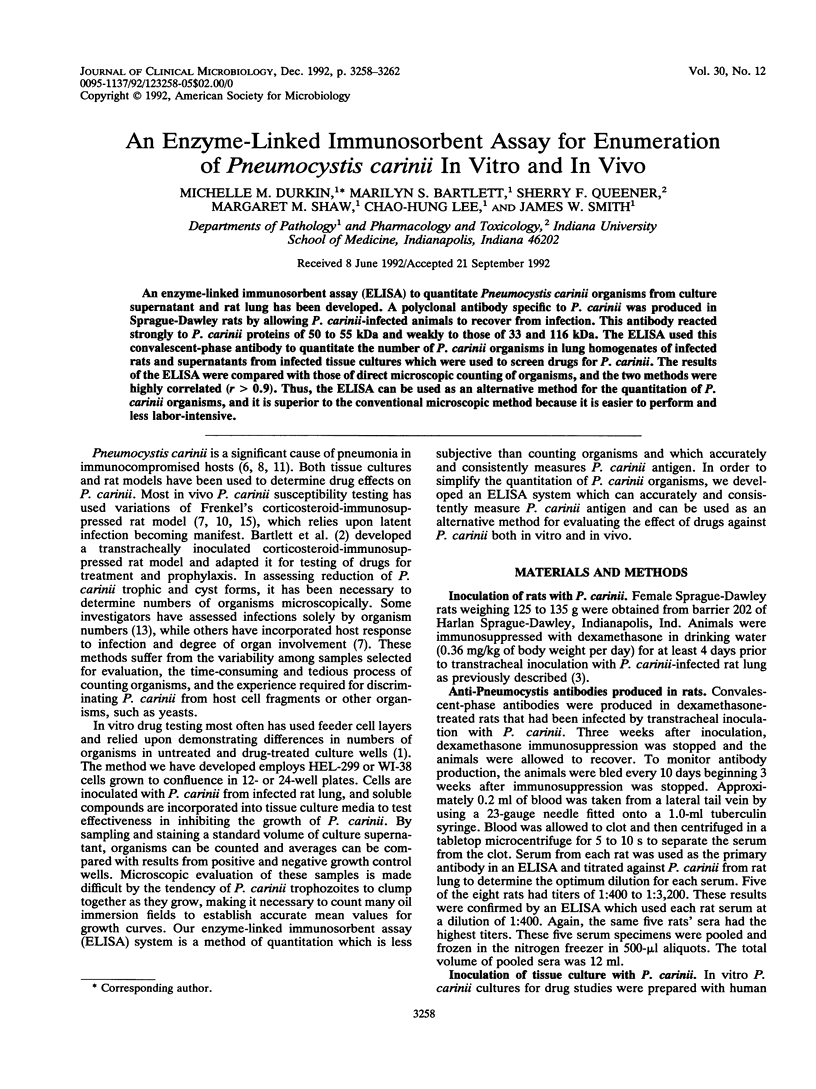
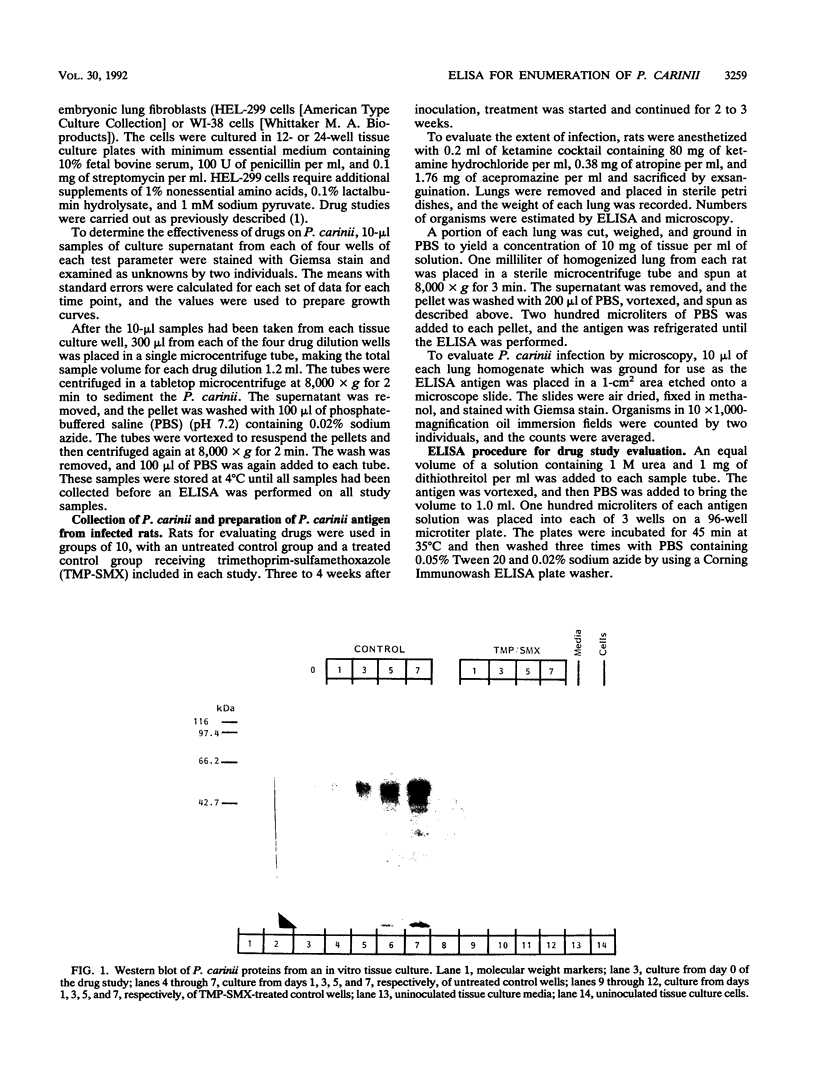
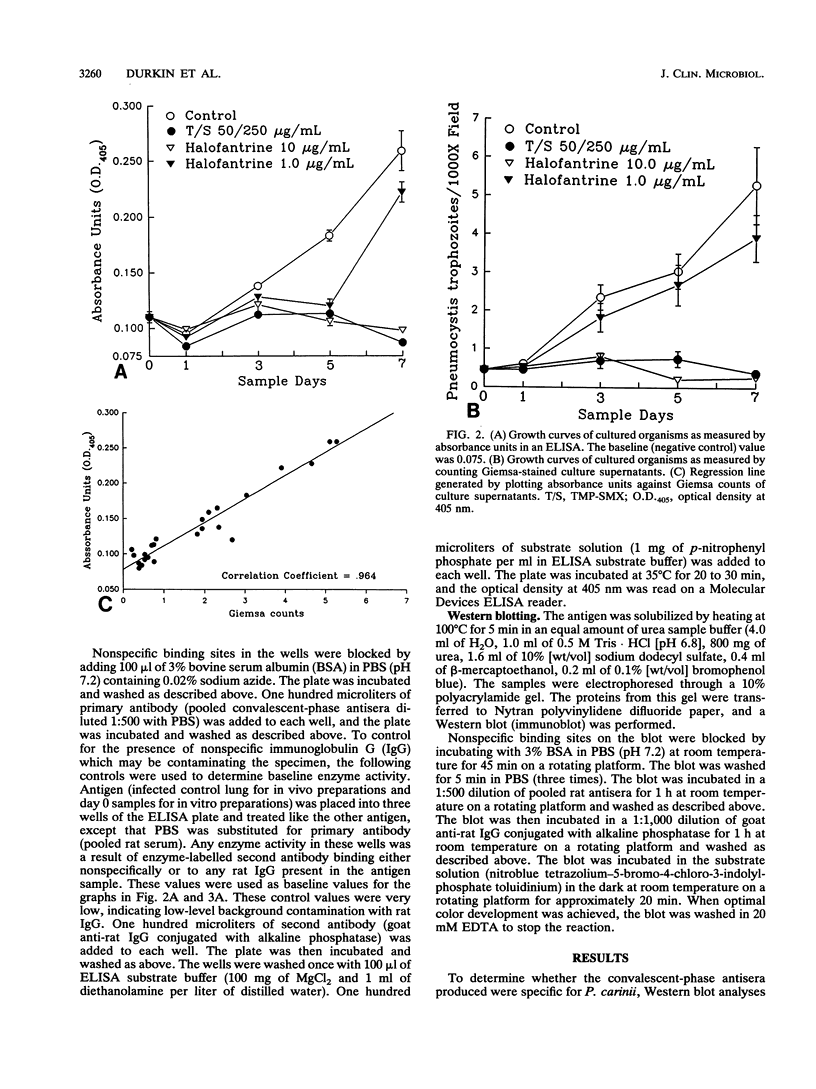
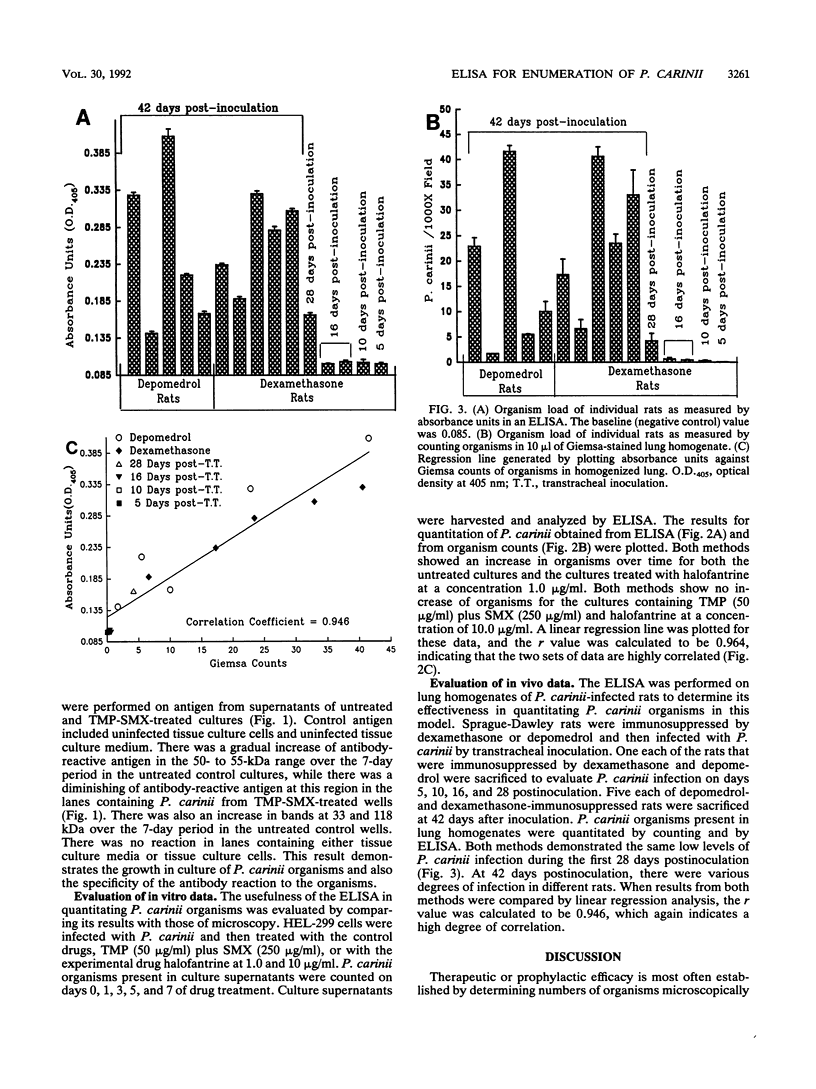
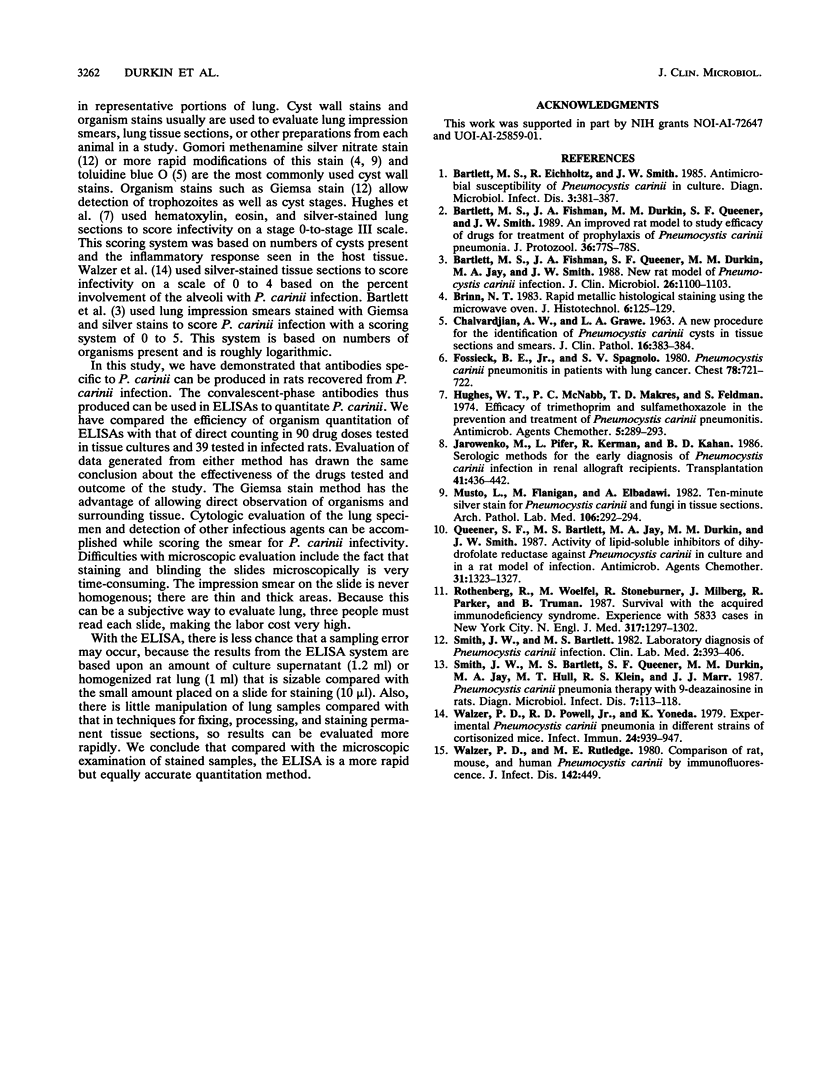
Images in this article
Selected References
These references are in PubMed. This may not be the complete list of references from this article.
- Barlett M. S., Fishman J. A., Durkin M. M., Queener S. F., Smith J. W. An improved rat model to study efficacy of drugs for treatment or prophylaxis of Pneumocystis carinii pneumonia. J Protozool. 1989 Jan-Feb;36(1):77S–78S. doi: 10.1111/j.1550-7408.1989.tb02712.x. [DOI] [PubMed] [Google Scholar]
- Bartlett M. S., Eichholtz R., Smith J. W. Antimicrobial susceptibility of Pneumocystis carinii in culture. Diagn Microbiol Infect Dis. 1985 Sep;3(5):381–387. doi: 10.1016/0732-8893(85)90076-8. [DOI] [PubMed] [Google Scholar]
- Bartlett M. S., Fishman J. A., Queener S. F., Durkin M. M., Jay M. A., Smith J. W. New rat model of Pneumocystis carinii infection. J Clin Microbiol. 1988 Jun;26(6):1100–1102. doi: 10.1128/jcm.26.6.1100-1102.1988. [DOI] [PMC free article] [PubMed] [Google Scholar]
- CHALVARDJIAN A. M., GRAWE L. A. A NEW PROCEDURE FOR THE IDENTIFICATION OF PNEUMOCYSTIS CARINII CYSTS IN TISSUE SECTIONS AND SMEARS. J Clin Pathol. 1963 Jul;16:383–384. doi: 10.1136/jcp.16.4.383. [DOI] [PMC free article] [PubMed] [Google Scholar]
- Fossieck B. E., Jr, Spagnolo S. V. Pneumocystis carinii pneumonitis in patients with lung cancer. Chest. 1980 Nov;78(5):721–722. doi: 10.1378/chest.78.5.721. [DOI] [PubMed] [Google Scholar]
- Hughes W. T., McNabb P. C., Makres T. D., Feldman S. Efficacy of trimethoprim and sulfamethoxazole in the prevention and treatment of Pneumocystis carinii pneumonitis. Antimicrob Agents Chemother. 1974 Mar;5(3):289–293. doi: 10.1128/aac.5.3.289. [DOI] [PMC free article] [PubMed] [Google Scholar]
- Jarowenko M., Pifer L., Kerman R., Kahan B. D. Serologic methods for the early diagnosis of Pneumocystis carinii infection in renal allograft recipients. Transplantation. 1986 Apr;41(4):436–442. doi: 10.1097/00007890-198604000-00005. [DOI] [PubMed] [Google Scholar]
- Musto L., Flanigan M., Elbadawi A. Ten-minute silver stain for Pneumocystis carinii and fungi in tissue sections. Arch Pathol Lab Med. 1982 Jun;106(6):292–294. [PubMed] [Google Scholar]
- Queener S. F., Bartlett M. S., Jay M. A., Durkin M. M., Smith J. W. Activity of lipid-soluble inhibitors of dihydrofolate reductase against Pneumocystis carinii in culture and in a rat model of infection. Antimicrob Agents Chemother. 1987 Sep;31(9):1323–1327. doi: 10.1128/aac.31.9.1323. [DOI] [PMC free article] [PubMed] [Google Scholar]
- Rothenberg R., Woelfel M., Stoneburner R., Milberg J., Parker R., Truman B. Survival with the acquired immunodeficiency syndrome. Experience with 5833 cases in New York City. N Engl J Med. 1987 Nov 19;317(21):1297–1302. doi: 10.1056/NEJM198711193172101. [DOI] [PubMed] [Google Scholar]
- Smith J. W., Bartlett M. S. Laboratory diagnosis of Pneumocystis carinii infection. Clin Lab Med. 1982 Jun;2(2):393–406. [PubMed] [Google Scholar]
- Smith J. W., Bartlett M. S., Queener S. F., Durkin M. M., Jay M. A., Hull M. T., Klein R. S., Marr J. J. Pneumocystis carinii pneumonia therapy with 9-deazainosine in rats. Diagn Microbiol Infect Dis. 1987 Jun;7(2):113–118. doi: 10.1016/0732-8893(87)90028-9. [DOI] [PubMed] [Google Scholar]
- Walzer P. D., Powell R. D., Jr, Yoneda K. Experimental Pneumocystis carinii pneumonia in different strains of cortisonized mice. Infect Immun. 1979 Jun;24(3):939–947. doi: 10.1128/iai.24.3.939-947.1979. [DOI] [PMC free article] [PubMed] [Google Scholar]
- Walzer P. D., Rutledge M. E. Comparison of rat, mouse, and human Pneumocystis carinii by immunofluorescence. J Infect Dis. 1980 Sep;142(3):449–449. doi: 10.1093/infdis/142.3.449. [DOI] [PubMed] [Google Scholar]



